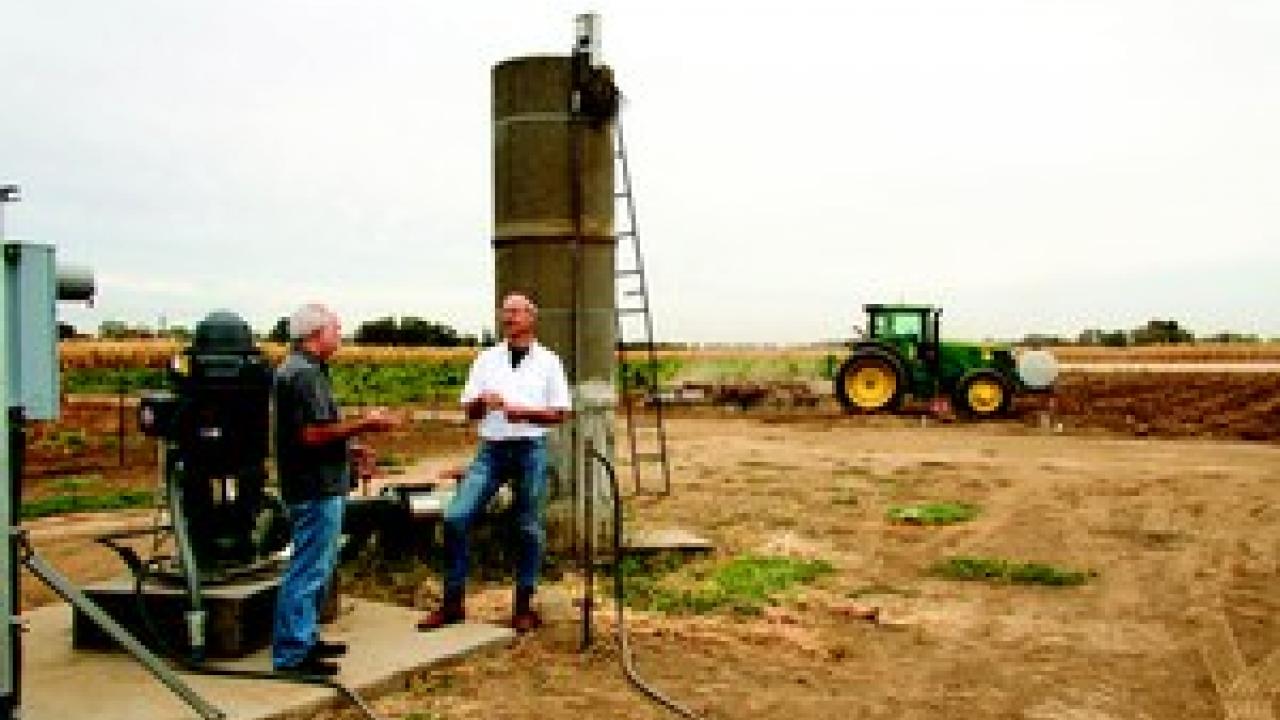
PUMPED UP
UC Davis scientists shed light on groundwater use, while farmers and others share their perspectives.
Four years of drought nearly emptied our reservoirs of surface water, so Californians increasingly have turned to the state’s groundwater basins to make up the difference. What is this “hidden” resource and what happens when more of it is pumped from the ground than what nature can replenish?
Groundwater: Bank on It
Groundwater is a natural resource we can’t see, which makes it hard to understand. It is shared by many, which makes it difficult to regulate. Although California is rich in groundwater, aquifers are not bottomless savings accounts.
UC Davis hydrogeology professor Graham Fogg favors a banking analogy to explain the importance of better groundwater management in California.
UNDERSTANDING GROUNDWATER
Checking and savings
Imagine every single penny we own is in two bank accounts: one checking, one savings. Surface water is checking. Groundwater is savings.
We keep track of the checking account balance and its deposits and withdrawals, but we have little idea of the balance and transactions in our savings account.
The two accounts are linked. When the checking account (surface water) balance runs low, unknown amounts of money are transferred from the savings account (groundwater) to the checking account. We’re not sure how much is transferred from savings because we don’t monitor those withdrawals. Nor do we adequately track when and where they occur.
How secure would our finances be? Not very!
“That’s how we’ve been managing surface water and groundwater in California,” said Professor Fogg of the Department of Land, Air and Water Resources. “Not only do we need to replenish that groundwater savings account, but also we need to manage both accounts in a smarter, more efficient fashion.”
Better Accounting
In the past, groundwater systems in California were flush enough to cover for little oversight. No more. With drought, climate change, and population pressures, we have entered a new era of water scarcity.
“I’m optimistic,” said groundwater expert Fogg. “If we can get a better handle on the whole interconnected surface-subsurface system, including the flows between groundwater and surface water, then we’ll be able to make changes to live within our means. When there is transparency, the state of the resource and the consequences of not managing it become obvious. Without that transparency, the incentives are simply
too weak to spur action.”
Approximately 40 percent of the state’s baseline water needs are supplied by groundwater in a year of average rainfall. During drought, that may increase to 60 percent or more.
WHAT IS GROUNDWATER?
Groundwater is water that fills the pore spaces between the sand, clay, fractured rock, and other subsurface geologic materials that lie beneath our feet. Think
of it as the water held between the spaces in a jar full of marbles. Groundwater not only saturates much of the subsurface, but also flows from areas of recharge to areas of discharge, such as springs, wetlands, and rivers.
IS GROUNDWATER ACCESSIBLE EVERYWHERE?
No. Underground sediments and rocks vary. It’s difficult to pump groundwater from layers of clay or silt with tiny soil particles. Aquifers are underground areas with coarse sediments or fractured rocks that make it easier to extract groundwater.
How many wells tap the groundwater of the Central Valley?
Hundreds of thousands of small domestic wells.
Tens of thousands of agricultural irrigation wells.
Several thousand public water supply wells.